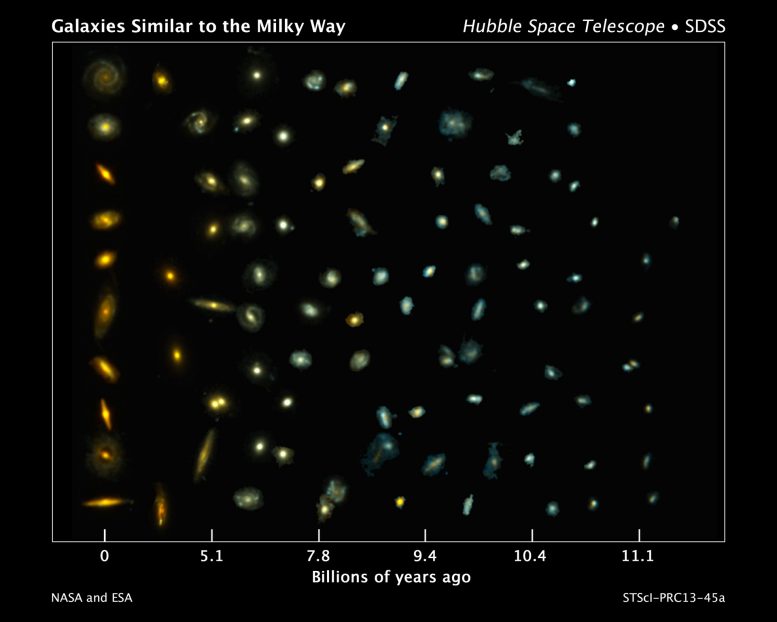
This composite image shows how Milky Way-like galaxies have evolved over time.Credit: NASA, ESA, P. van Dokkum (Yale University), S. Patel (Leiden University), and the 3D-HST Team
A composite image from Hubble and Sloan Digital Sky Survey data reveals how Milky Way-like galaxies have evolved over time.
This composite image shows examples of galaxies similar to our Milky Way at various stages of construction over a time span of 11 billion years.
The galaxies are arranged according to time. Those on the left reside nearby; those on the far right existed when the cosmos was about 2 billion years old. The bluish glow from young stars dominates the color of the galaxies on the right. The galaxies at left are redder from the glow of older stellar populations.
Astronomers found the distant galaxies in two Hubble Space Telescope surveys: 3D-HST and the Cosmic Assembly Near-infrared Deep Extragalactic Legacy Survey, or CANDELS. The observations were made in visible and near-infrared light by Hubble’s Wide Field Camera 3 and Advanced Camera for Surveys. The nearby galaxies were taken from the Sloan Digital Sky Survey.
This image traces Milky Way-like galaxies over most of cosmic history, revealing how they evolved over time. Hubble’s sharp vision resolved the galaxies’ shapes, showing that their bulges and disks grew simultaneously.









The accretion of stellar dusts into single stars first and then consolidating into a galaxy is well defined. similarly the accretion of dusts can evolve into planets , asteroids and cometary belts in course of time around a single star. Thank You.